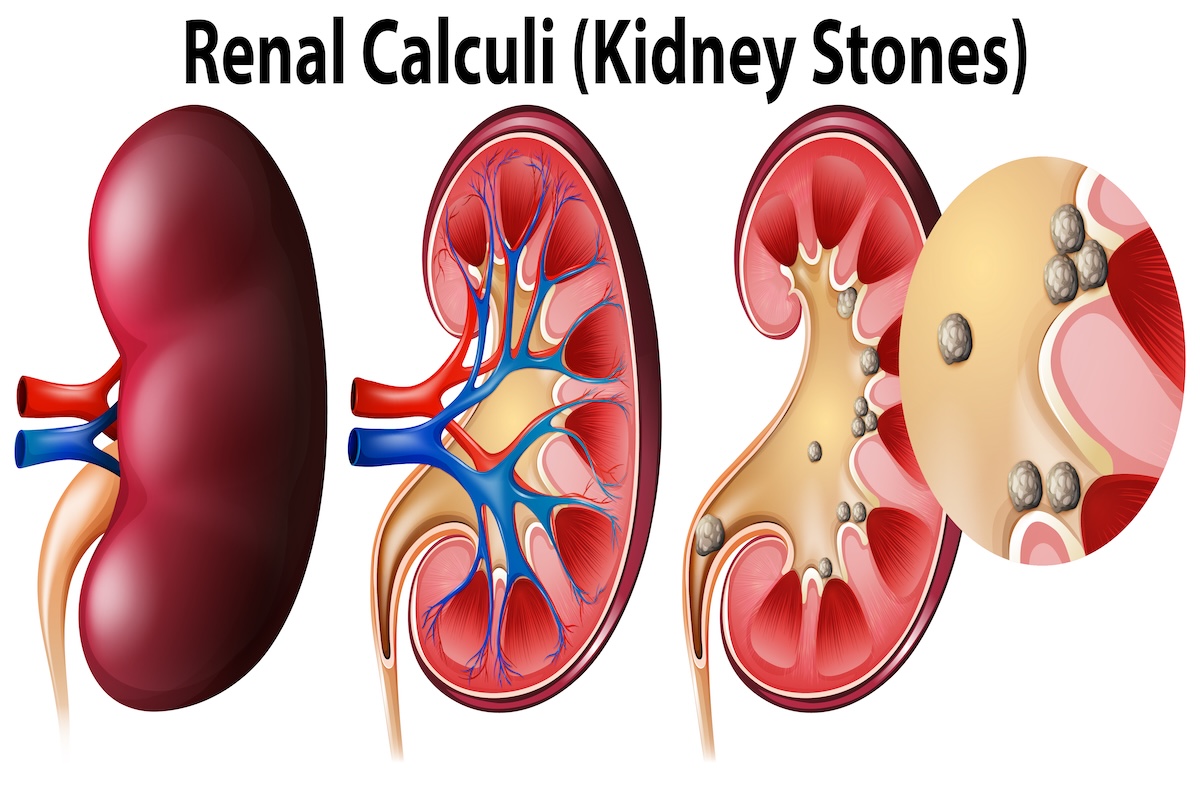Kidney stones are small, hard deposits that form inside your kidneys. They’re made of minerals and salts that stick together and build up over time. These stones can vary in size—some are as small as a grain of sand, while others can be as large as a pea or even bigger. While they may stay in the kidney, they often move into the ureter—the tube that connects the kidney to the bladder—and that’s usually when the pain begins.

Kidney stones are common. Many people experience them at some point in their lives. They can be very painful, but the good news is that they are treatable and often preventable. Understanding how they form, recognizing the symptoms, and knowing your treatment options can help you manage them and lower your chances of having them again.
In this article, we’ll break down what kidney stones are, what causes them, the different types, how to recognize the symptoms, how they’re diagnosed, and what treatments are available.
What Are Kidney Stones?
Your kidneys filter waste and excess fluids from your blood to create urine. Sometimes, the balance of water, salts, and minerals in the urine is off. When there’s too much of certain substances and not enough liquid to flush them out, these substances can crystallize and stick together. Over time, they grow into stones.
The stones can stay in the kidney or travel through the urinary tract. If they move, they may block the flow of urine and cause severe pain. Even small stones can cause discomfort as they pass. Sometimes, stones leave the body on their own, but larger ones may need medical help.
Kidney stones are not usually dangerous if treated early, but they can cause complications if ignored, including infections or kidney damage.
What Causes Them and What Types Exist
Kidney stones can form for a variety of reasons. One of the most common causes is not drinking enough water. When you don’t stay hydrated, your urine becomes more concentrated, making it easier for minerals to stick together and form crystals.
Your diet can also play a role. Eating too much salt, sugar, or animal protein can increase your risk. Other risk factors include obesity, digestive diseases, urinary tract infections, and certain medications or supplements.
There are several different types of kidney stones, each made of different materials:
Calcium stones are the most common. They’re often made of calcium oxalate, which comes from certain foods like spinach, nuts, and chocolate.
Struvite stones form in response to urinary tract infections. They can grow quickly and may become quite large.
Uric acid stones are more likely in people who eat a lot of meat or have conditions like gout. They can also form if you’re dehydrated or lose too much fluid.
Cystine stones are rare and usually result from a genetic disorder that causes the kidneys to excrete too much of a certain amino acid.
Knowing the type of stone you have can help guide treatment and prevention. Your doctor may test your urine and the stone (if you pass it) to figure out what kind it is.
Common Symptoms to Watch For
Kidney stones don’t always cause symptoms, especially if they’re small and stay in the kidney. But when they move into the ureter, they often cause intense discomfort. The pain is usually sudden and sharp, often felt in the back, side, lower abdomen, or groin. It can come in waves and vary in intensity.
Other symptoms of kidney stones can include:
-
Pain while urinating
-
Urine that is pink, red, or brown
-
Cloudy or foul-smelling urine
-
Frequent urge to urinate
-
Nausea and vomiting
-
Fever or chills if an infection is present
The pain can be so strong that it sends people to the emergency room. If you notice blood in your urine, can’t urinate, or have a fever along with pain, it’s important to seek medical attention right away.
How Kidney Stones Are Diagnosed
If you’re having symptoms, your doctor will start with a physical exam and ask about your medical history. They’ll likely order imaging tests to look inside your urinary tract. A CT scan is often the most accurate test, but X-rays or ultrasounds may also be used.
A urinalysis may be done to check for signs of infection or crystals in the urine. Blood tests can help identify high levels of calcium or other substances that could lead to stones. If you pass a stone, your doctor may have it tested in a lab to learn more about its makeup.
The goal of diagnosis is not only to confirm that a stone is present but also to understand its size, location, and what it’s made of. This helps determine the best treatment approach.
Treatment Options and Prevention
Treatment for kidney stones depends on the size, type, and whether the stone is causing pain or blockage. Many small stones pass on their own with time. Drinking lots of water can help flush the stone through your system more easily. Your doctor may also suggest medications to relieve pain, relax your ureter, or prevent future stones.
If the stone is too large to pass naturally or is causing serious symptoms, other treatments may be needed. These can include:
-
Shock wave therapy (lithotripsy), which uses sound waves to break the stone into smaller pieces
-
Ureteroscopy, where a thin tube is inserted into the urethra and bladder to remove or break up the stone
-
Surgery, in rare cases when other treatments don’t work or the stone is too big
Preventing future stones is an important part of treatment. Drinking plenty of water is one of the best ways to keep your kidneys healthy and reduce the risk. Your doctor may also suggest dietary changes based on the type of stone you had. In some cases, medications can help balance the substances in your urine.
